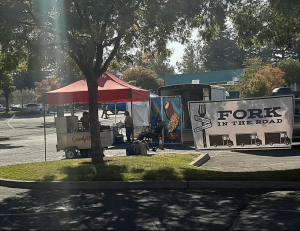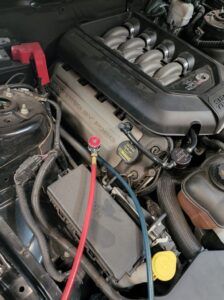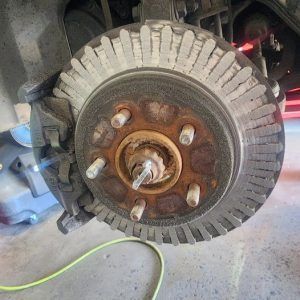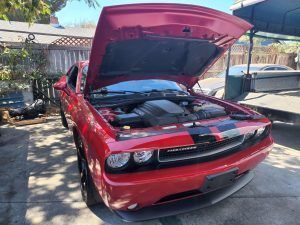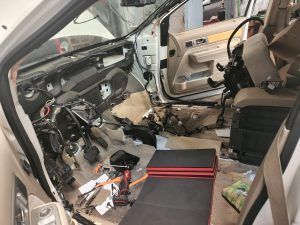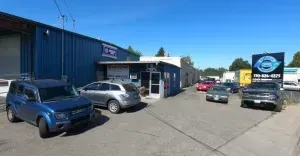Comprehensive Guide to Auto Repair Terminology: Understanding Key Terms
The world of auto repair can be intimidating, especially if you’re unfamiliar with the terminology used by mechanics. Whether you’re a vehicle owner trying to understand your repair bill or an automotive enthusiast looking to expand your knowledge, understanding common auto repair terms is essential. This guide will break down key terms used in automotive diagnostics, maintenance, and repairs, helping you navigate conversations with mechanics and better understand your vehicle’s needs.
1. General Auto Repair Terms
a) Aftermarket Parts
Aftermarket parts are components made by third-party manufacturers rather than the original equipment manufacturer (OEM). They are often less expensive than OEM parts and can be used as replacements during repairs.
Advantage: Typically more affordable and widely available.
Disadvantage: May not always meet the same quality standards as OEM parts.
b) OEM (Original Equipment Manufacturer) Parts
OEM parts are made by the same manufacturer that produced the vehicle’s original components. These parts are designed to fit and function exactly like the original ones.
Advantage: Guaranteed compatibility and reliability.
Disadvantage: Generally more expensive than aftermarket parts.
c) Diagnostic Trouble Code (DTC)
DTCs are alphanumeric codes generated by a vehicle’s onboard diagnostic (OBD) system when it detects an issue. These codes help mechanics identify specific problems within the engine, transmission, or other systems.
Example: P0300 indicates a random/multiple cylinder misfire.
d) Check Engine Light (CEL)
The CEL is a dashboard warning light that illuminates when the vehicle’s OBD system detects a problem. It could indicate anything from a loose gas cap to a serious engine issue.
Action: Have your vehicle scanned for DTCs to determine the cause.
e) Preventive Maintenance
Preventive maintenance involves routine services designed to prevent major mechanical issues and keep the vehicle running smoothly. Examples include oil changes, tire rotations, and brake inspections.
Importance: Reduces the risk of breakdowns and prolongs the lifespan of the vehicle.
2. Engine and Performance Terminology
a) Combustion Chamber
The combustion chamber is the area inside the engine cylinder where air, fuel, and a spark combine to create an explosion that powers the engine.
b) Camshaft
The camshaft controls the opening and closing of the engine’s intake and exhaust valves. It plays a crucial role in engine performance and timing.
Related Terms:
Camshaft Position Sensor (CPS): Monitors the camshaft’s position and sends data to the engine control unit (ECU).
c) Crankshaft
The crankshaft converts the up-and-down motion of the pistons into rotational motion, which ultimately powers the vehicle’s wheels.
Related Terms:
Crankshaft Position Sensor (CPS): Tracks the position and speed of the crankshaft for proper engine timing.
d) Fuel Injector
Fuel injectors deliver a precise amount of fuel into the combustion chamber, ensuring efficient fuel combustion and optimal engine performance.
Symptoms of a Faulty Injector: Poor fuel economy, rough idling, and engine misfires.
e) Spark Plug
Spark plugs ignite the air-fuel mixture in the combustion chamber, initiating the combustion process.
Signs of Worn Spark Plugs: Difficulty starting the engine, reduced fuel efficiency, and engine misfires.
3. Suspension and Steering Terminology
a) Shock Absorbers (Shocks)
Shock absorbers are part of the suspension system, designed to dampen the impact of road bumps and provide a smooth ride.
Symptoms of Worn Shocks: Excessive bouncing, uneven tire wear, and poor handling.
b) Struts
Struts combine a shock absorber with a coil spring, supporting the vehicle’s weight and providing structural support for the suspension system.
Difference from Shocks: Struts also bear weight, while shocks only dampen motion.
c) Ball Joint
Ball joints connect the control arms to the steering knuckles, allowing smooth movement of the suspension and steering systems.
Symptoms of a Failing Ball Joint: Clunking noises, uneven tire wear, and steering instability.
d) Tie Rod
Tie rods connect the steering rack to the steering knuckles, transmitting the steering wheel’s motion to the wheels.
Signs of a Bad Tie Rod: Loose steering, uneven tire wear, and vibration in the steering wheel.
e) Alignment
Alignment refers to the adjustment of a vehicle’s suspension components to ensure the wheels are correctly positioned. Proper alignment ensures even tire wear and precise steering.
Common Terms:
Camber: The inward or outward tilt of the wheel.
Caster: The angle of the steering axis when viewed from the side.
Toe: The angle at which the wheels point inward or outward.
4. Brake System Terminology
a) Brake Pads
Brake pads press against the brake rotors to create friction, slowing or stopping the vehicle.
Signs of Worn Brake Pads: Squealing noise, reduced braking efficiency, and longer stopping distances.
b) Brake Rotors (Discs)
Brake rotors are the metal discs that the brake pads clamp onto, creating the friction needed to stop the wheels.
Symptoms of Worn Rotors: Vibration while braking, visible grooves, and reduced stopping power.
c) Brake Fluid
Brake fluid is a hydraulic fluid that transfers force from the brake pedal to the brake calipers.
Importance: Regular brake fluid flushes prevent moisture buildup and maintain braking efficiency.
d) ABS (Anti-lock Braking System)
The ABS prevents the wheels from locking up during hard braking, allowing the driver to maintain steering control.
Related Terms:
ABS Sensor: Monitors wheel speed to prevent lockup.
5. Electrical and Charging System Terminology
a) Battery
The battery provides electrical power to start the engine and operate electrical components when the vehicle is off.
Signs of a Failing Battery: Slow engine crank, dim headlights, and a dead battery.
b) Alternator
The alternator generates electrical power while the engine is running and recharges the battery.
Symptoms of a Failing Alternator: Battery warning light, dim lights, and electrical system malfunctions.
c) Starter Motor
The starter motor engages the engine’s flywheel, cranking the engine to start it.
Signs of a Bad Starter: Clicking noise when turning the key, slow cranking, or no start.
d) Fuse Box
The fuse box contains fuses that protect electrical circuits from overloading and short-circuiting.
Blown Fuse Symptoms: Loss of function in specific electrical components like headlights or power windows.
6. Transmission and Drivetrain Terminology
a) Transmission
The transmission transfers power from the engine to the wheels, allowing the vehicle to change speeds and directions.
Types:
Automatic Transmission: Changes gears automatically.
Manual Transmission: Requires the driver to change gears using a clutch and gear lever.
b) Clutch
The clutch disconnects the engine from the transmission, allowing the driver to change gears in a manual vehicle.
Symptoms of a Worn Clutch: Slipping gears, difficulty shifting, and burning smell.
c) Differential
The differential allows the wheels to rotate at different speeds while turning, improving traction and stability.
Types:
Open Differential: Standard differential type.
Limited-Slip Differential: Provides better traction by limiting wheel spin.
d) CV Joint (Constant Velocity Joint)
CV joints transfer power from the transmission to the wheels while allowing for flexible movement.
Signs of a Bad CV Joint: Clicking noise while turning, grease around the wheel, and vibration.
7. Cooling System Terminology
a) Radiator
The radiator dissipates heat from the engine coolant, preventing the engine from overheating.
Symptoms of a Failing Radiator: Leaking coolant, engine overheating, and low coolant levels.
b) Coolant (Antifreeze)
Coolant circulates through the engine to absorb heat and prevent freezing in cold temperatures.
Importance: Regular coolant flushes maintain optimal engine temperature and prevent corrosion.
c) Thermostat
The thermostat regulates coolant flow, ensuring the engine maintains the correct operating temperature.
Signs of a Faulty Thermostat: Engine overheating or not reaching operating temperature.
8. Exhaust System Terminology
a) Catalytic Converter
The catalytic converter reduces harmful emissions by converting exhaust gases into less toxic substances.
Symptoms of a Failing Catalytic Converter: Reduced fuel efficiency, check engine light, and rotten egg smell.
b) Muffler
The muffler reduces the noise produced by the exhaust system.
Signs of a Bad Muffler: Loud exhaust noise and reduced engine performance.
c) Oxygen Sensor (O2 Sensor)
The O2 sensor monitors the oxygen levels in the exhaust gases to ensure efficient combustion and reduce emissions.
Symptoms of a Bad O2 Sensor: Poor fuel economy, rough idling, and check engine light.
Conclusion
Understanding auto repair terminology empowers vehicle owners to make informed decisions about maintenance and repairs. Whether you’re discussing issues with a mechanic or reviewing a repair estimate, familiarity with these terms ensures clearer communication and helps maintain your vehicle’s performance and longevity.
